-
About
- About Listly
- Community & Support
- Howto
- Chrome Extension
- Bookmarklet
- WordPress Plugin
- Listly Premium
- Privacy
- Terms
- DMCA Copyright
- © 2010-2025 Boomy Labs


 DJ Rob
DJ Rob
Listly by DJ Rob
Djrobblog presents to you the 25 most “rad” nuclear-related songs in modern music history! It’s a list of pop culture’s most radioactive tunes whose inclusion is based purely on their song titles (not necessarily their content). Some of these songs are related to nuclear technology, either metaphorically or literally. Others have nothing remotely to do with an unstable isotope, other than having a radioactive title (think George Clinton’s “Atomic Dog”).
After you’ve been “exposed” to this critical mass of radioactive song titles, you won’t get a “dose” of anything like it anywhere else on the interwebs. And you won’t be able to “decontaminate” your ears for a long time afterwards!
While some of these tunes are nuclear in name only, other songs on this list with literal connections to the science were created in the aftermath of events like the Three Mile Island accident that occurred near Harrisburg, PA in March 1979. In the immediate wake of TMI, which involved the partial meltdown (and permanent shutdown) of one of the two reactors located there, artists across the country (and the world) recorded songs largely in protest of nuclear power. While none of those tunes had long half-lives, some have become cult classics.
The songs are ranked in purely subjective fashion by djrobblog based on nothing other than gut feel and the blogger’s opinion about each tune’s place in popular culture, whether because of their intended tie to nuclear science or otherwise.
Part tongue-in-cheek/part scientific, it’s the perfect fusion of music and nuclear. So here they are: the 25 most rad tunes whose titles were influenced by nuclear physics—as compiled by djrobblog—from No. 25 to No. 1. Each entry comes with a link to an audio/video YouTube clip.
So strap on your protective gear and enjoy!
Source: https://djrobblog.com/?p=15013

This special countdown begins with the end in mind. London-based death metal band GraVil created this intensely brutal song about abandonment and betrayal to signal the end of a relationship, or its “decommissioning.” Much like a nuclear reactor that’s been decommissioned, there’s no chance that the relationship at the root of this angry maelstrom will ever be resurrected. Heads will certainly be banging and fists punching as this relentless tune plays mercilessly on your listening device.
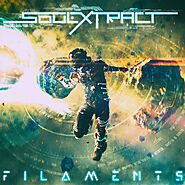
In simple terms, the Roentgen measures one’s exposure to ionizing radiation, without accounting for the amount of absorbed dose the exposed object receives. Electronic artist Soul Extract, a/k/a Josh Mullis from Canton, Georgia, created this industrial but melodic tune in honor of the rarely used Roentgen, with lyrical references to “atomic energy,” “fallout” and “isotopic release” to keep the tune honest.
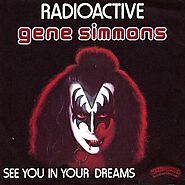
Back in late 1978, the four members of the legendary rock band KISS all released solo albums. Gene Simmons’ lone single from his LP was the only one to apply a “radioactive” metaphor to a female love interest, although the song puzzlingly makes the connection between being radioactive and “selective.” Perhaps due to that lyrical misfire, the song wasn’t nearly as popular as bandmate Ace Frehley’s “New York Groove” (a top-20 hit). Simmons’ “Radioactive” only peaked at No. 47 in January 1979 (two months before the TMI accident).

The pop and R&B trio of Destiny’s Child released a compilation album of obscure hits and love songs in 2013 called “Love Songs.” Largely considered a reunion album given their lengthy hiatus at the time, they recorded one new song for the set, the tune “Nuclear.” The breezy shuffler makes an attempt to keep the metaphor going with lyrics about connecting on a “quantum level” and never losing the energy. The biggest stretch is when Michelle Williams sings “anytime the climates change between us, we share a bond and a chemistry that can’t be touched.” Hey, you have to give them an “A” for effort, despite the fact that the song never really gains the energy it speaks of losing. Still good enough for inclusion on this list, if only for its straight-up “Nuclear” title.

U.K. artist Rogue has been known for putting together catchy “experimental” electronic dance music tracks for the better part of a decade now for the Monstercat label. One of those songs is the upbeat and melodic “Fusion,” an optimistic tune celebrating the merger of two people in an illuminating relationship. This “Fusion”-titled number was the best among more than a dozen songs I found bearing the name of a technology that is once again being explored by the nuclear industry.

New Zealand electropop singer-songwriter Ladyhawke released her fourth solo album just over a month ago (Nov. 19, 2021), with recording sessions occurring during the COVID-19 pandemic and largely via video calls between the artist and her two producers. That makes “Reactor” the newest track on this list, with lyrics directed at a man apparently obsessing over a woman who is clearly interested in other things. In the song she says, “no more fatal attraction, you know you’re the reactor.” Surprisingly, this catchy tune wasn’t listed as one of the four singles released from Ladyhawke’s album.
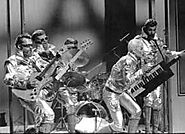
In the wake of the Three Mile Island accident in March 1979 came a flurry of recordings that either capitalized on or protested the nuclear catastrophe. The blues rock group Tennessee Farm Band—hailing from an intentional farming commune in Lewis County, TN—recorded this jam in June ‘79 as a sort-of protest song. In the guitar-driven rocker, the artists lament the cooling towers popping up all around them singing, “Ain’t got no use for no nukes on the loose.” It also rails against contamination and mutation, the latter being a common and often exaggerated stereotype associated with radiation exposure. Some of my colleagues might be interested to know that another musical offshoot of The Farm was a new wave band called The Nuclear Regulatory Commission (pictured above), a band who released an EP called “We Are The NRC” and an album titled “Reactor,” both in 1980.
You can hear the song by clicking the title link above.

American rock musician Beck released “Gamma Ray” as the second single from his ‘Modern Guilt’ album in 2008. It’s an uptempo surf-rock number that musically harkens back to the 1960s, but lyrically contains apocalyptic themes, like melting ice caps, burning houses, and hurricanes. Beck took the song to No. 19 on Billboard’s Alternative Airplay chart and its parent album was nominated for a Grammy.

Jazz saxophonist Joe Henderson released the album ‘Inner Urge’ in 1966, containing music recorded in 1964. It included the 9-minute jam known as “Isotope,” a song Henderson says was inspired by the great Thelonious Monk. As an instrumental, “Isotope” has nothing to do with radioisotopes, obviously, but its “dark and intense” quality, as The Penguin Guide to Jazz described it, makes it a shoo-in for this list of nuclear-related titles.

Known best for its (barely) top-40 single “Clones (We’re All),” Alice Cooper’s fifth solo album also contained the popular album track “Nuclear Infected,” a mostly metaphorical tune no doubt inspired by the Three Mile Island accident from the year prior to its release. In just over two minutes, The Godfather of Shock Rock sings of glowing yellow (when he’s happy) and blue (sad) and his ability to “glow up” and “clear out any ballgame.” His references to TMI and “China Syndrome” are clearly tongue-in-cheek as well.
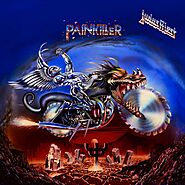
Fans of Judas Priest will acknowledge that the addition of drummer Scott Travis to their lineup before their 1990 album’s release “lit an immediate fire under the bandmembers’ asses.” As evidence, this metallic masterpiece—complete with lyrical references to heat, explosions, and nitro bombshells—is anything but a meltdown, musically speaking. Instead it grabs your attention and keeps it from start to finish—like a furious, out-of-control, pack of wolverines—with an unrelenting pace that only slows for about 20 seconds before the four-minute mark when it picks up again. In the nuclear business, a meltdown is to be avoided at all costs. In Heavy Metal, this is just the kind of meltdown that an aging band like Judas Priest needed some 30-plus years ago.

Billie Joe Armstrong, lead singer of Green Day, doesn’t really attribute the fast-paced rock song “Nuclear Family” to anything meaningful. The lyrics seem to be a mix of metaphors relating the decline of society to the demise of the nuclear family with that decline being hastened by the detonation of a nuclear bomb. There’s even a countdown to finish the song. Whatever the message, it’s the best song I could find that incorporated any use of the common familial reference in its title.
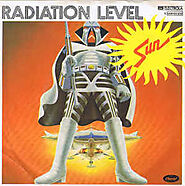
Not many Black funk bands took on the topic of radiation—whether metaphorically or literally—back in the day. The Dayton, Ohio band Sun was one of the exceptions, as the topic fit right into their ongoing theme of solar-related titles during the late 1970s. Their 1978 hit, “The Sun Is Here,” was their highest peaking on the Billboard R&B/Hip-Hop Songs chart, but “Radiation Level,” coming in the wake of the TMI accident in March 1979, was their longest-charting, peaking at No. 25 and spending 19 weeks on the list from May through September 1979. Give this a listen and see if the two-note synth-bass throughout this track reminds you of some kind of ominous alarm. Quite effective indeed!
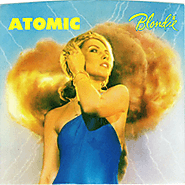
The popular American group Blondie, featuring Debbie Harry on vocals, had four top-10 hits stateside, with all four (“Heart of Glass,” “Call Me,” “The Tide Is High” and “Rapture”) hitting No. 1. Their other four top-40 hits didn’t fare so well, with the lowest-charting of them being “Atomic,” the 1980 followup to “Call Me.” In fact, so sub-critical was “Atomic,” that it entered AND exited the top-40 (peaking at No. 39) before “Call Me” finished its own top-40 run—a rare occurrence for a followup and its predecessor back then.
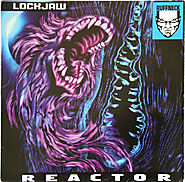
“You gotta take all your emotions, all your anger, all your love, all your hate, and push it way down here in the pit of your stomach, and then let it explode like a reactor!” That’s the refrain that fuels this rapid-fire, underground electronic dance music tune that is easily the fastest-paced song on this list. The programmed drum riffs alone come across like a chain reaction, not relenting until the song experiences a rapid shutdown at the end. Truly a ravers delight!

This historical walk through the life of The Mother of Modern Physics, Marie Curie, is by the Swedish dance-pop group Army of Lovers. It appeared on the third of their four studio albums, ‘The Gods Of Earth And Heaven.’ Lyrically, the catchy tune covers the physicist’s discovery of radium and polonium, her partnership with husband Pierre (referred to as her “tutor”), and the two Nobel prizes she won for physics and science, in 1903 and 1911, respectively. Those accomplishments made her the first woman to win a Nobel prize and the first person to win separate prizes in two categories. The song gets points for being both historically relevant and catchy!
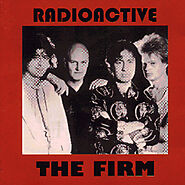
Somewhere between Gene Simmons’ “Radioactive” and Imagine Dragons’ “Radioactive” came this “Radioactive” by the British rock supergroup The Firm. In 1984, Jimmy Page, Paul Rodgers and Chris Slade, former members of Led Zeppelin, Bad Company and AC/DC, respectively, got together and formed The Firm and released a self-titled debut album the following year. “Radioactive” was the big hit from it, reaching No. 1 on U.S. Album Rock Tracks chart in Billboard and No. 28 on the magazine’s Hot 100.
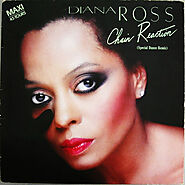
After legendary superstar Diana Ross turned 40 in 1984, she scored one more top-10 hit, the Marvin Gaye tribute “Missing You.” A year later, she had her last Billboard Hot 100 entry altogether as “Chain Reaction,” written by The Bee Gees, fizzled out at No. 66 on the chart. While Ross could no longer sustain a chain reaction on the American charts, she continued to do well overseas, where the metaphorical “Chain Reaction” gave her a No. 1 hit in the U.K., Ireland and Australia.
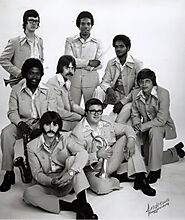
This fun funk number was a direct reaction to the Three Mile Island accident in March 1979. And who better to sing about it than a band who was based in Harrisburg near where the reactor was located, and whose associates included a former contractor who worked at the plant just months before the accident occurred. That contractor was creative genius Charles “Marty” Moore, who gave the band the idea to write and record a song full of references to the partially melted-down reactor and the consequences—real or imagined—that resulted.
“Radiation Funk” appeared on the band Maxwell’s 1979 album, appropriately titled ‘Meltdown,’ and became a regional hit for them. The song’s story was retold on the 40th anniversary of the accident in March 2019, and included the fact that Maxwell member Jeff Aston’s rapped verse in the bridge actually preceded the explosion of rap music that occurred months later with the Sugar Hill Gang’s debut.
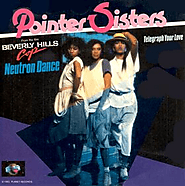
The versatility of the legendary R&B and pop group the Pointer Sisters paid off in spades during the 1970s and ‘80s. They charted 17 top-40 hits, seven of which reached the top 10. The rousing “Neutron Dance,” which did double duty as one of the last singles from their huge album ‘Breakout,’ as well as being featured in the blockbuster movie “Beverly Hills Cop,” was their last top-10 hit in 1985.

People often have an apocalyptic view of nuclear, particularly given how it’s portrayed in art with conflicts between good and evil and the nihilistic outcomes that follow. Def Leppard’s huge 1988 hit “Armageddon It” was less about the ultimate battle that leads to a world’s end and more a play on words: “Are you getting it? Yes, Armageddon It!” Still, the Rock Hall of Famers tried to make a radiological connection by adding this “Nuclear Mix,” and, in so doing, found their way onto this list!
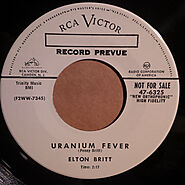
After President Dwight D. Eisenhower’s famous “Atoms For Peace” speech in 1953, which encouraged governments of the world to pursue more peaceful uses of nuclear energy, the demand for uranium became so large that many would-be prospectors headed west with just Geiger counters and the belief that they could mine and sell the stuff and get rich quick. By 1955, “Uranium Fever” became a national joke, as immortalized in this song recorded that year by country singer Elton Britt (1915-1972), a tune that has since been featured in the popular 2015 video game “Fallout 4.”
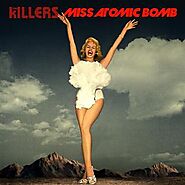
According to Genius.com, The Killers’ Brandon Flowers said that the song “Miss Atomic Bomb” is simply a “beautiful picture of this woman in the desert…I think she’s still alive.” Largely due to its video, the song is considered a sequel to their classic, “Mr. Brightside,” from eight years earlier. The tune reached the top 40 of both Billboard’s Rock Airplay and Alternative Airplay charts. The Rolling Stone Readers’ Poll named it the best song of 2012.
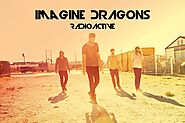
It’s hard to believe that this sleeper alternative rock hit turns ten years old in 2022, especially considering it was on the Billboard Hot 100 charts for nearly two years and established a longevity record that held for seven years until 2021 when The Weeknd’s “Blinding Lights” finally broke it. Still, the post-apocalyptic tune with lyrics about waking up to ash and dust and breathing in chemicals is the biggest hit on the Hot 100 ever to bear a nuclear-themed title, and that alone merits a high ranking on this list.
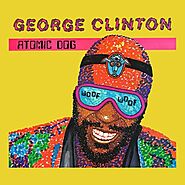
The P-Funk collective led by legendary funk maestro George Clinton had five No. 1 songs on the Billboard R&B/Hip-Hop Songs chart between 1977 and 1983. “Atomic Dog” was the last of them, memorably displacing Michael Jackson’s “Billie Jean” from the top in April 1983. “Dog” was attributed to Clinton as a solo effort since legal issues prevented the use of his former collectives’ names Parliament and Funkadelic.
Regardless, “Atomic Dog” has been regarded as a P-funk classic at a time when funk as it was previously known was becoming a dying entity. Besides not having anything to do with radiation or nuclear beyond its iconic title, the song has been adopted as a call-to-arms for the national Black Greek letter organization, Omega Psi Phi Fraternity, Inc., as (my) brothers around the world, old and new, immediately launch into a step performance—or hop—anytime the song is heard, no matter when or where it’s played. It’s also the only song on this list to top the Billboard soul chart or displace a MJ song in doing so, which speaks volumes!

Hi, I'm DJ Rob, owner and author of the music blogsite djrobblog.com. I live in Chicago, IL and have been doing the blogsite since January 2015. It features articles about music news, history and trivia - both old and new. The features I enjoy doing the most are my djroblists. I've done dozens of lists ranking everything from blue-eyed soul singers to Prince's greatest songs. I only recently started converting them to listly to increase interaction with my readers. Take some time to enjoy them and let me know what you think! And check out djrobblog.com when you can!